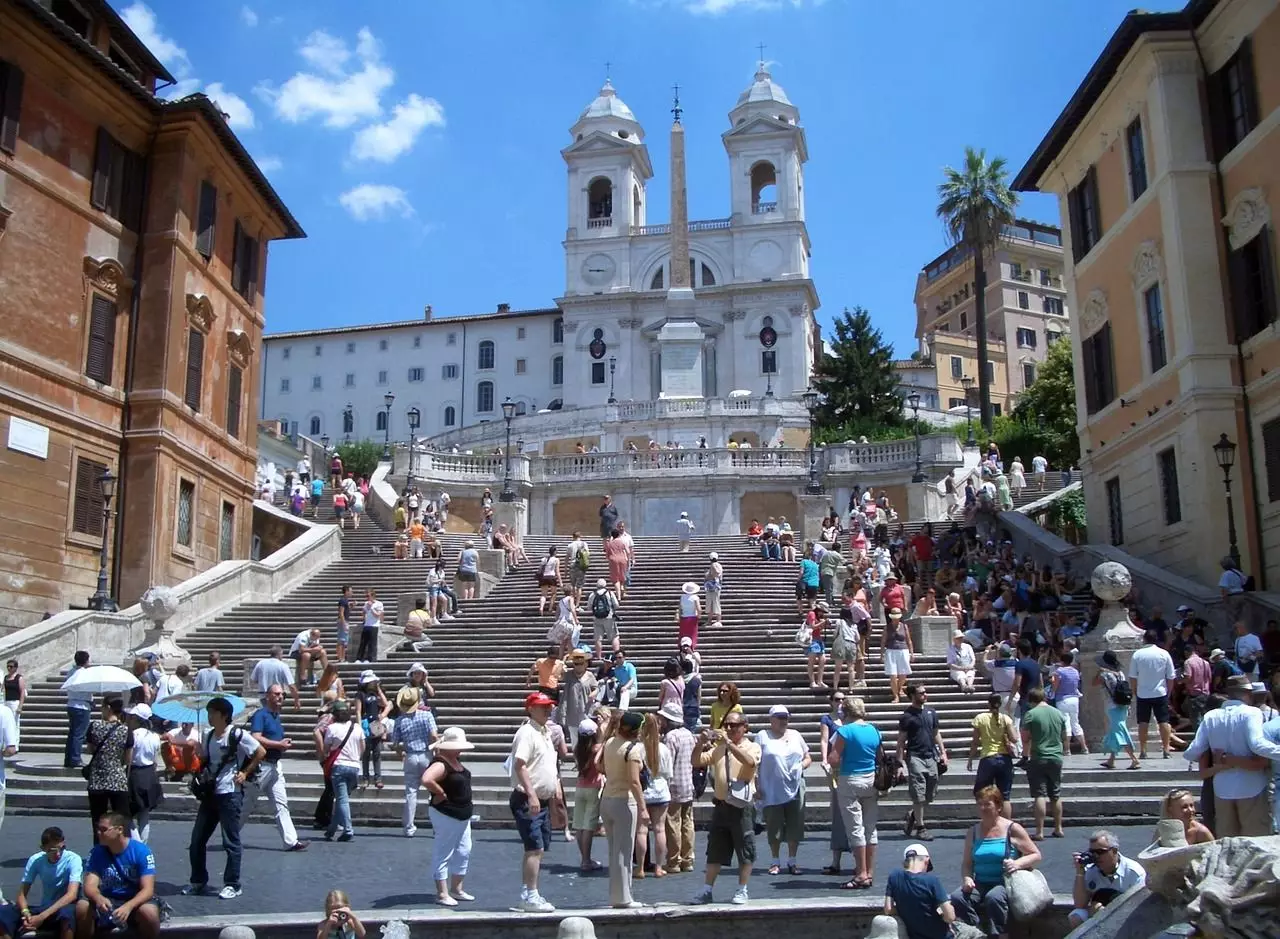
Spanish Steps
Spanish Steps – Information and Travel Tips
Every year, millions of visitors from around the world are drawn to the Spanish Steps. Whether you're admiring the fountain below, people-watching from the terraces, or taking photos from the top, the site is a must-see highlight in Rome. But beyond its beauty lies a deep historical and cultural significance that makes it one of the city's most beloved landmarks.
What Do Locals Call the Spanish Steps?
While most international visitors know them as the Spanish Steps, locals in Rome refer to them as the Scalinata di Trinità dei Monti 🔉 , which translates to "Staircase of the Trinity of the Mount." This name highlights the strong connection to the Trinità dei Monti church at the top of the stairs. The name "Spanish Steps" comes from the nearby Piazza di Spagna, where the Spanish Embassy to the Holy See is located.
How Do I Get to the Spanish Steps?
The Spanish Steps are located in the heart of Rome’s historic center, making them easy to reach by public transport or on foot. The most direct way is by Metro Line A. Get off at the "Spagna" station, and from there, follow the underground passage that leads you directly to Piazza di Spagna. It's a short, well-signposted walk.
If you are staying in the city center or near Villa Borghese, you can also enjoy a short walk to the steps. Many popular bus lines serve the area as well. For visitors exploring by e-scooter or bicycle, there are parking zones nearby, but the square itself is pedestrian-only.
| Stop | Transport |
|---|---|
| Spagna |
When Are the Spanish Steps Open?
The Spanish Steps are accessible 24 hours a day, 7 days a week. As a public monument, there are no set opening or closing hours. However, the steps may occasionally be closed off for maintenance or special events such as fashion shows, concerts, or official ceremonies. Even during these times, the area around the steps remains accessible, allowing you to admire their beauty from a distance.
Best Time to Visit and Photo Tips
For the best experience, visit early in the morning or just before sunset. At these times, the crowds are thinner and the natural light creates a magical atmosphere, especially for photography. If you're into Instagram-worthy shots, capture the view from the top of the stairs looking down on Piazza di Spagna, or stand near the Barcaccia Fountain for a beautiful upward perspective with the church in the background.
What Are the Rules at the Spanish Steps?
To preserve the historic site, there are a few important rules all visitors should follow. Sitting on the steps is not allowed, and food or drink consumption is prohibited. Local authorities enforce these rules strictly, so be respectful during your visit. The goal is to keep this cultural treasure clean and enjoyable for everyone.
What Is the Cost to Visit the Spanish Steps?
Visiting the Spanish Steps is completely free. You don’t need a ticket or reservation. Simply show up and enjoy the atmosphere, architecture, and views — all at no cost. It’s one of the many wonderful things to do in Rome without spending a cent.
Nearby Attractions Worth Exploring
While you’re at the Spanish Steps, take time to explore the surrounding area. Just at the base lies the famous Via dei Condotti, Rome’s luxury shopping street. Nearby you’ll also find the Keats-Shelley Memorial House, where Romantic poets lived and died, and the Villa Medici, a stunning Renaissance building with artistic and historical exhibitions. It’s the perfect neighborhood for a morning stroll or an elegant evening out.
History of the Spanish Steps in Rome
The Creation of the Spanish Steps (1700–1725)
The idea for the Spanish Steps came about in the early 18th century when there was a need to create a scenic link between the French-owned Trinità dei Monti church and the Spanish-controlled square below. Thanks to a generous donation from French diplomat Étienne Gueffier, architect Francesco de Sanctis was able to bring the vision to life. His winning design blended dramatic symmetry with dynamic Baroque movement, resulting in one of the most elegant staircases in Europe.
Baroque Splendor and Cultural Meeting Point (1725–Today)
Completed in 1725, the Spanish Steps quickly became a central social and cultural space in Rome. Artists, poets, and intellectuals would gather on its broad terraces, drawing inspiration from its architecture and views. In the 19th and 20th centuries, the steps became especially popular with Romantic painters and later Hollywood filmmakers. Even today, you’ll find the steps buzzing with life and creativity.
Restoration and Preservation
Throughout their history, the Spanish Steps have undergone several restoration projects to preserve their beauty and structural integrity. The most recent restoration was completed in 2016, funded by luxury fashion house Bulgari, which has its flagship store nearby. These efforts ensure that the steps remain safe and beautiful for future generations to enjoy.
The Timelessness of a Landmark
The Spanish Steps are more than just stairs — they are a symbol of Rome’s artistic soul. Every visit offers a new perspective: whether you sit with a gelato, snap a photo of the view, or watch the city wake up in the early morning. Come for the architecture, stay for the atmosphere — and let yourself be part of the timeless story that unfolds on every step.